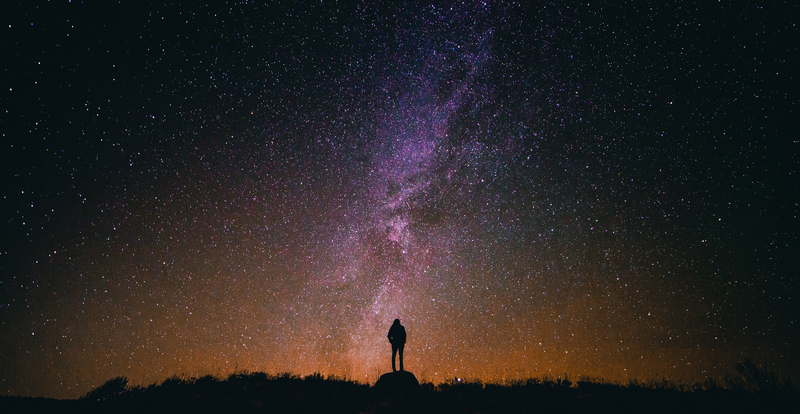After several decades of viewing the observable universe from various telescopes and astronomical instruments, the universe can be defined as an incredibly large space consisting of a variety of cosmic jewels. The countless galaxies, ever twinkling billions of stars, every unique shape of colorful dusty molecular clouds which are truly the ornaments of the universe.
UNIVERSE AND ITS EARLY TIMELINE
Mysterious astrophysical phenomena such as the evolution of galaxies, planets, Blackholes etc. still need to understand more, the various processes and interactions that occur every second makes the universe look beautiful. But the master of the universe is the time which controls the changes over a cosmic time. Time is the sole responsible for the evolution and quenching processes of all the celestial bodies in the universe itself. If time doesn’t exist then it would be highly impossible to understand the cosmic timeline of the universe.

(Image credit: Google.com/search)
Scientists on our planet provided the foundation of understanding the evolution of the universe by proposing the “Big bang theory”. The events and interactions that transpired before the big bang remain uncertain. It’s possible that there was a scientific process solely triggered by the occurrence of the cosmic event known as Big bang. We continue to explore and theorize about this fascinating topic in the field of cosmology. That’s how we vision from the perspective of physics. Several publications by numerous scientists have utilized countless observational datasets obtained through advanced astronomical instruments. However, our understanding the vast universe remains incomplete to this day. Because the universe is infinite and space of mysteries. And our love for the universe is infinite too.
Cosmic timeline of universe
Our scientists had contributed their ideas to the world by giving the scientific theories in order to understand the evolution of our universe. One of the important theories that stands out by effectively proposing the evolutionary stages of our universe after the “Big bang” event is standard cosmological model known as Lambda Cold Dark Matter (LCDM) model. From this model we are able to understand the early interactions, formation of large-scale structures, thermal history, abundance of Hydrogen and Helium, existence of dark matter and the universe expansion.

(Image credit: NASA/ESA/A. Felid (STScI))
According to this model the dark matter is composed of neutral interacting particles that is they are not meant of absorption, emission or zero interactions in the space. And their particles propagate less than speed of the light, so it is known as Cold.
As we have learnt in our social science textbooks about the human evolutionary stages, similarly the universe too has the interesting history of its growth. The redshift(Z) plays a very important role in understanding the expansion of our universe. We all are familiar with big bang theory, so after the big bang scientists have scientifically well explained the changes of universe over cosmic time. The very initial process in the early universe that happened after big bang is “recombination” phenomena. It was in the stage of cooling down of plasma. Once it reaches to a sustainable temperature, there started the formation of atoms. This is the cosmic time when the protons and electrons combined to form neutral Hydrogen atoms but stars aren’t formed yet. This is known as “Dark ages”. Hence, at Z=1100 is a crucial event because it allowed the light to travel freely throughout the space leading to cosmic microwave radiation. Later this continued the fluctuations in the medium due to presence of neutral hydrogen in the universe where they fused together to form helium resulting the evolution of first stars, which was after 400 million years of big bang. This is the second major event occurred. The region where the existence of first star began its shine is called as “Cosmic dawn”. These stars were able to emit UV photons, X-rays etc. This again became the reason to heat-up the surrounding medium. At Z=36 once again the re-ionization takes place where the bubbles of hydrogen and helium will get fused to form stars, galaxies etc. This region is known as “epoch of re-ionization”. As a result, at Z=6 the amount of hydrogen atom decreased in the universe. And currently the region where we are present is at Z=0. In the above picture it is very clear that the from big bang event to present it took 13.77 billion years. However, the interactions between the matter and antimatter also played a crucial role in shaping the evolution of our universe (will be explained in the next article). So still, this is in the focus of active research area and the world is curious to know more about it.
Hence, as the galaxies and other stars are accelerating away from us at the rate of speed of light. Scientists confirmed that the universe is expanding. Nobody knows what’s there at the edge of universe. The beauty of the universe stuns everyone and its mysterious character shows us that, still we didn’t understand completely our universe. Universe is limitless and endless. We are lucky to be a part of it.
Blog Written By
Kavya Chari
Astro-strategist content writer at Aeronautics and Space Exploration